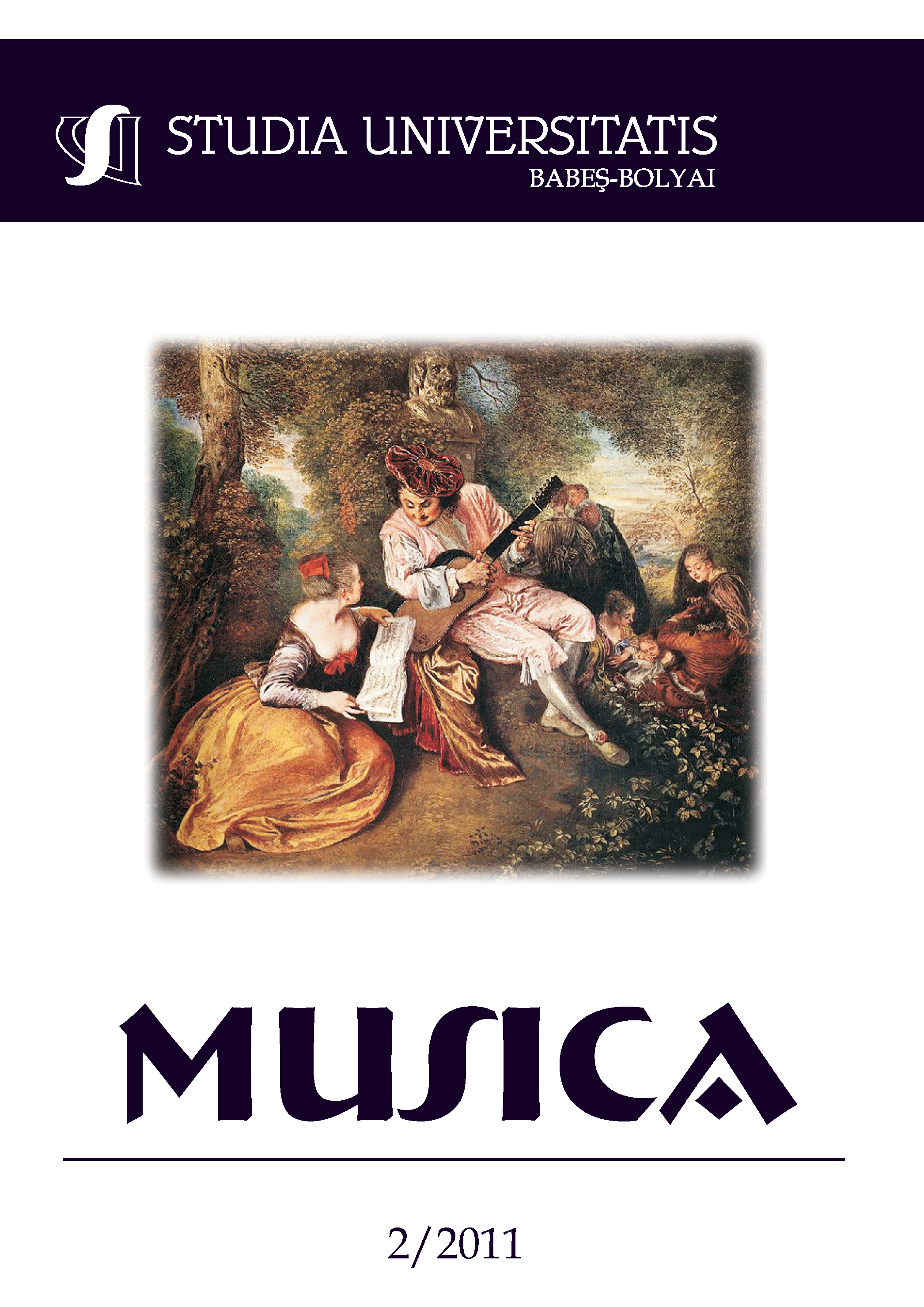„DER GOLDENE SARG“ – DIE OPER DES „DEBUSSYS DER THEIßGEGEND“ IM SPIEGEL IHRES TONSYSTEMS
Keywords:
authorship, Vántus István, tonal system, infinite pentatonality, operas, Szeged, analysis, Golden Coffin, Hungarian opera historyAbstract
„The Golden Coffin” – Opera by “Debussy from Tisza-part” in the Mirror of his Tone System. Vántus István, the determining personality of the musical life of the 20th century in Szeged would be 75 years old in 2010, and it is the 35th anniversary of his opera Golden Coffin. This opera is one of the greatest pieces of music which can be related to Szeged and which deserves this rank because of its size, quality and importance as well. Vántus made the libretto from the novel Golden Coffin, which takes places in the era of Emperor Diocletian. Móra Ferenc, who was also born in Szeged, wrote the novel. The whole piece is in the tonal system of the so called “infinite pentatonality”, which was created by Vántus in the 1960s, and then he built up his whole life-work on the basis of this special system, which originates in the Hungarian folk pentatonality, but it contains the potentials of modern sonority as well. By presenting Golden Coffin I would like to make an approach to Vántus’s mentality as a composer, analysing it from the dual points of view of theory and practice.
References
Bárdos, Lajos, Liszt Ferenc, a jövő zenésze (Franz Liszt, der Musiker der Zukunft), Akadémiai Kiadó, Budapest, 1976.
Fodor, Géza, „Vision und Leidenschaft in der Oper. Sándor Szokolay: Bluthochzeit – Ungarische Staatsoper” Muzsika (Zeitschrift), November 2003.
Kelemen, Imre, A zene története 1750-ig. (Die Geschichte der Musik bis 1750) Nemzeti Tankönyvkiadó, Budapest, 1998.
Kiss, Ernő, Vántus István (1935–1992), Vántus István Társaság, Szeged, 1997.
Kiss, Ernő, Vántustól, Vántusról (Von Vántus, über Vántus), Bába Kiadó, Szeged, 2007.
Lendvai, Ernő, Bartók költői világa (Die poetische Welt von Bartók), Szépirodalmi Könyvkiadó, Budapest, 1971.
Móra, Ferenc (übersetzt von Clemens, von Wälzel), Der goldene Sarg, Corvina, Budapest, 1977.
P. Berinkey, Irma, Aranykoporsó (Der goldene Sarg), in: Nyugat (Zeitschrift) 1933/4 http://epa.oszk.hu/00000/00022/00552/17276.htm Heruntergeladen am 4. März 2010.
Péter, László, Aranykoporsó (Der goldene Sarg), in: Móra Ferenc, Stadtrat von Kiskunfélegyháza, Kiskunfélegyháza, 1989.
Roziner, Feliksz: Szocialista realizmus a szovjet zenében. [Der sozialistische Realismus in der sowjetischen Musik] www.ketezer.hu/menu4/2003.../roziner.html Heruntergeladen am 3. März 2010.
Wagner, Peter, Einführung in die gregorianischen Melodien 3. Gregorianische Formenlehre, Breitkopf & Härtel, Leipzig, 1921.
Downloads
Published
How to Cite
Issue
Section
License
Copyright (c) 2011 Studia Universitatis Babeș-Bolyai Musica

This work is licensed under a Creative Commons Attribution-NonCommercial-NoDerivatives 4.0 International License.



